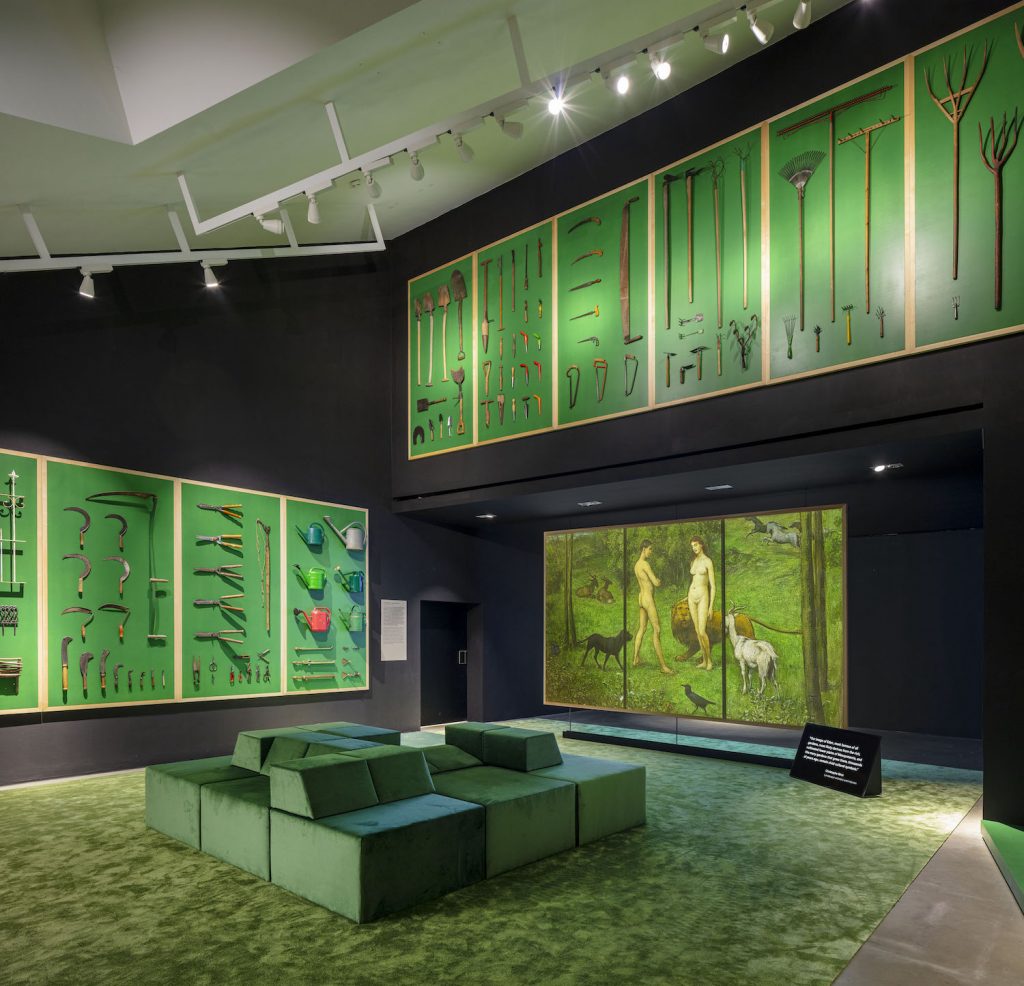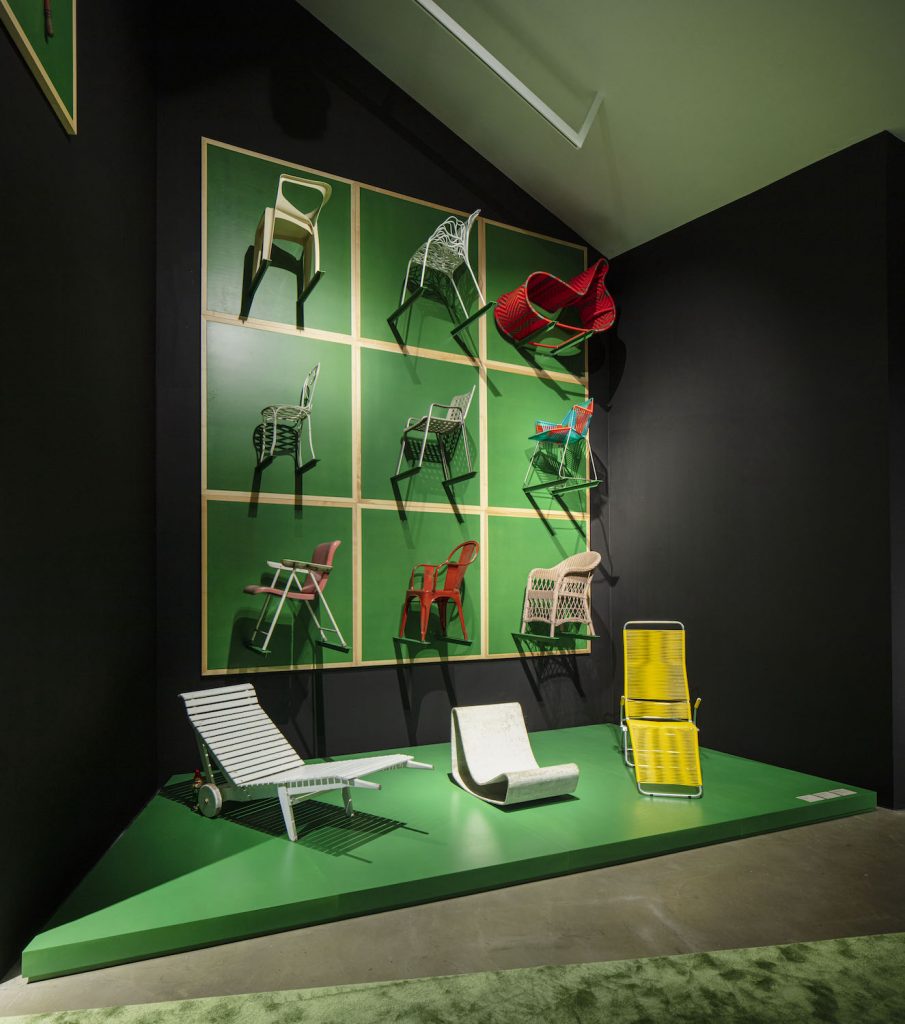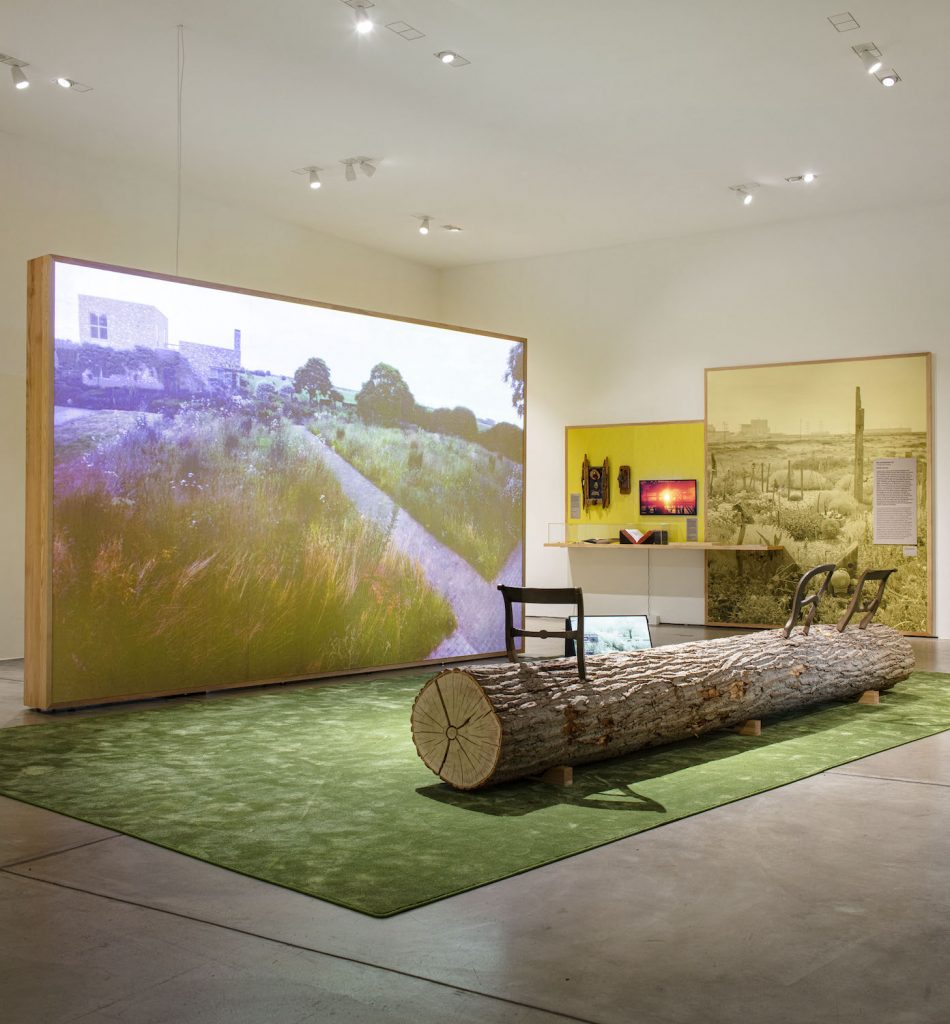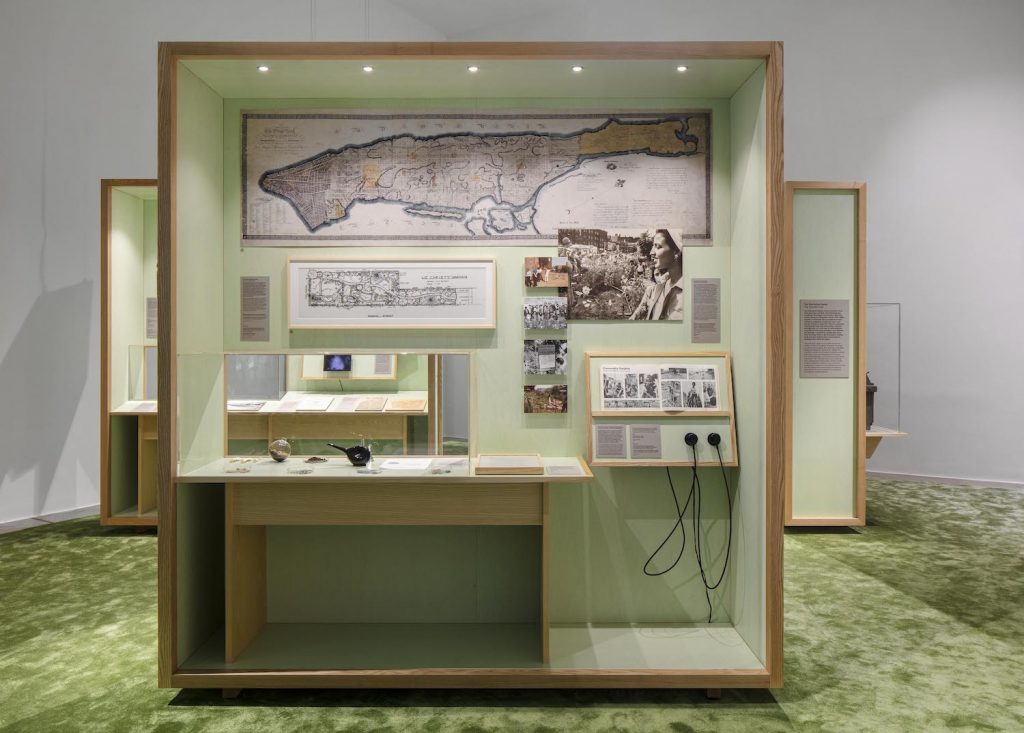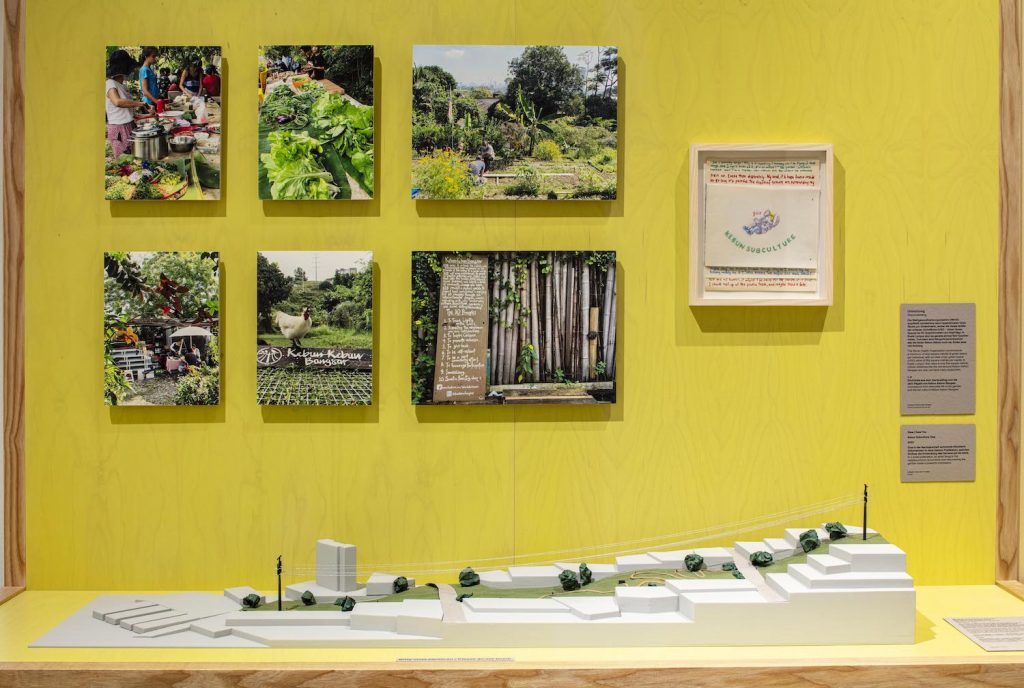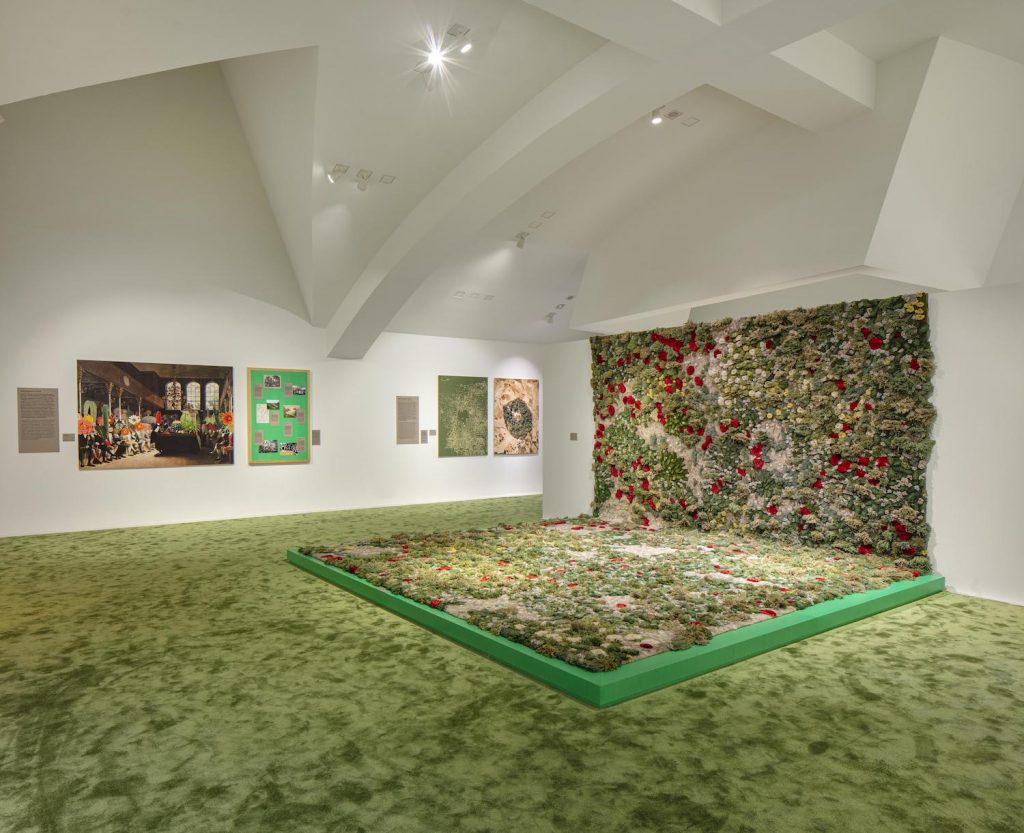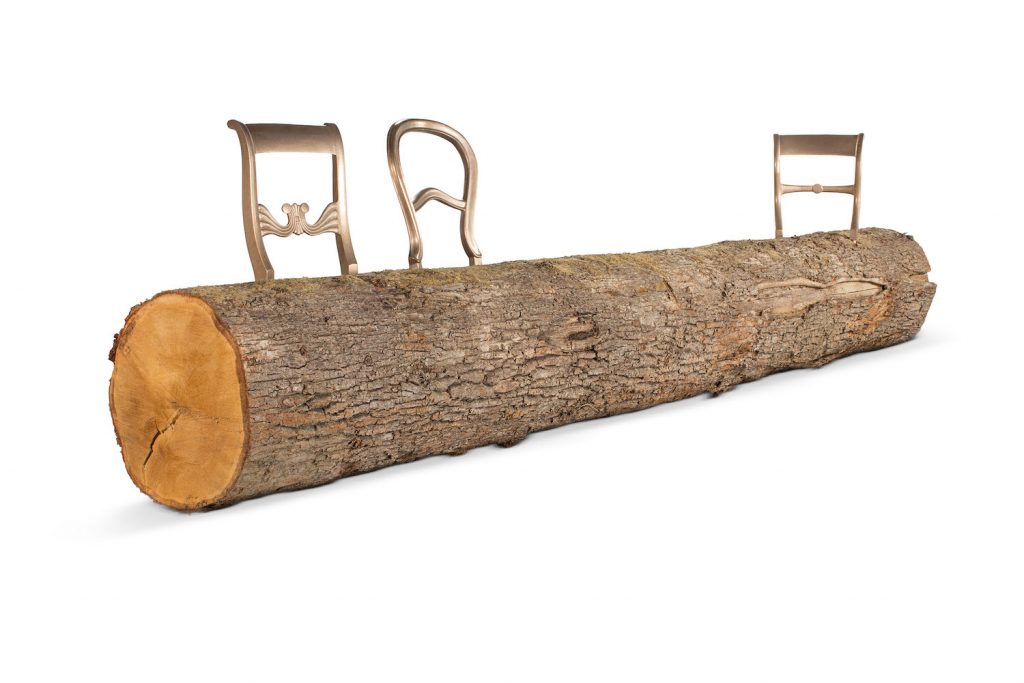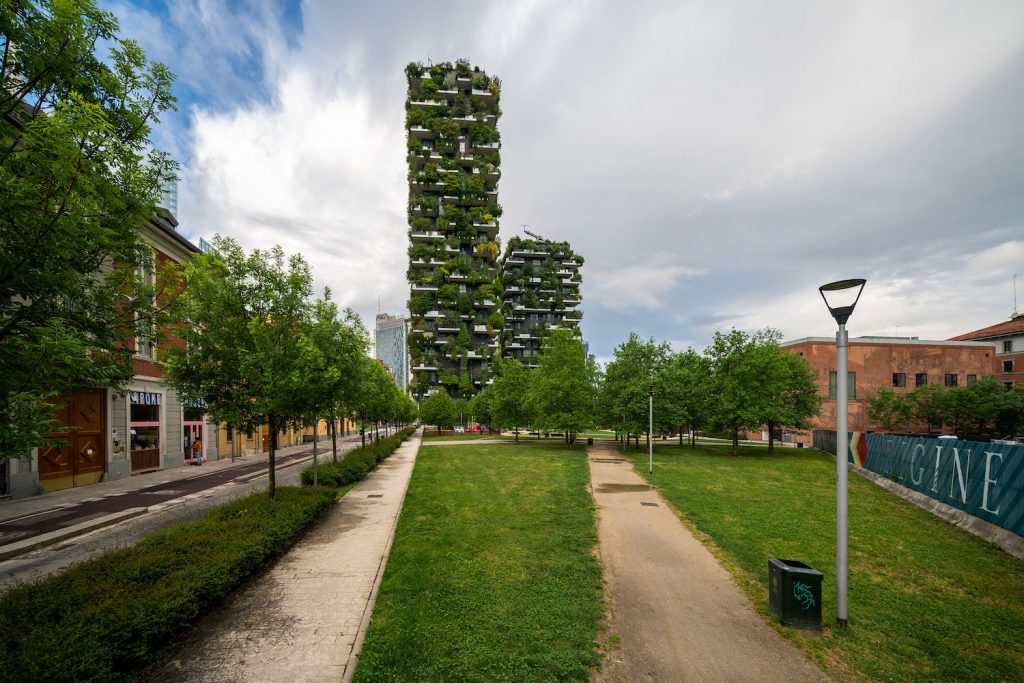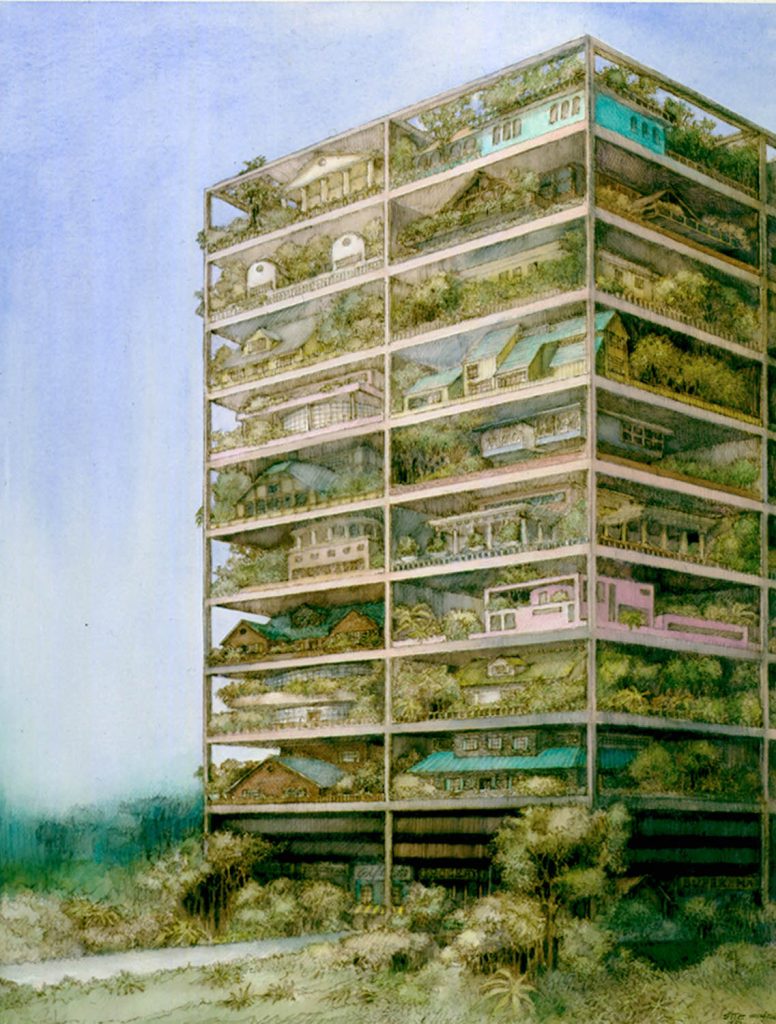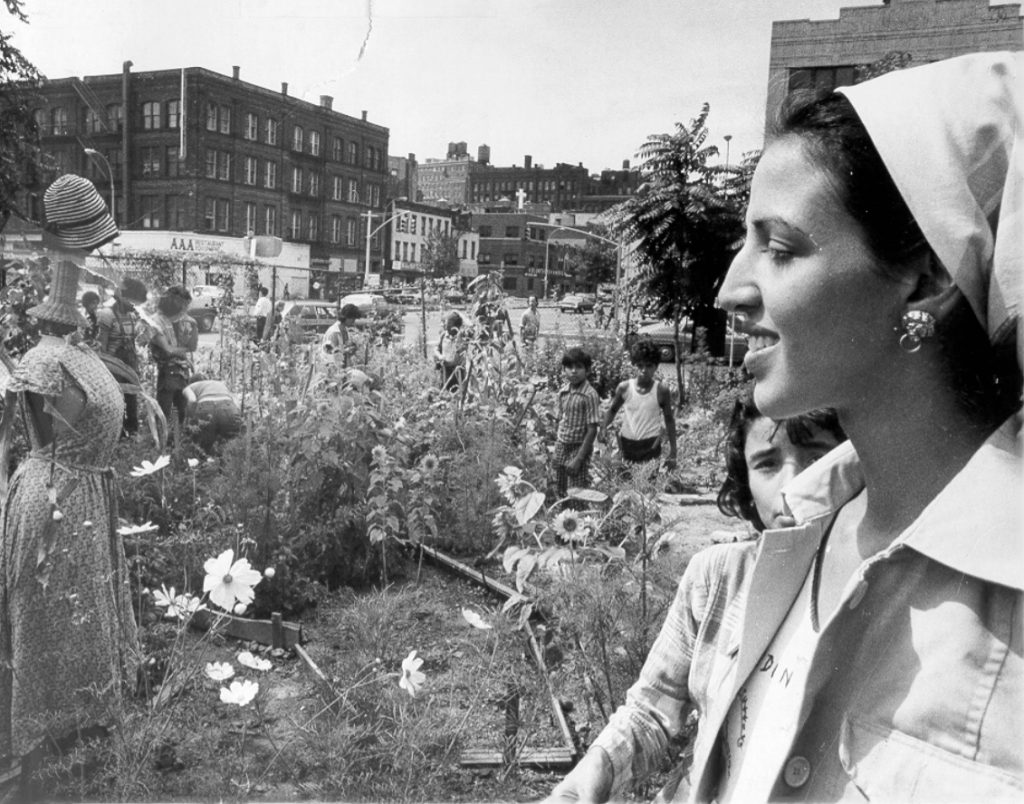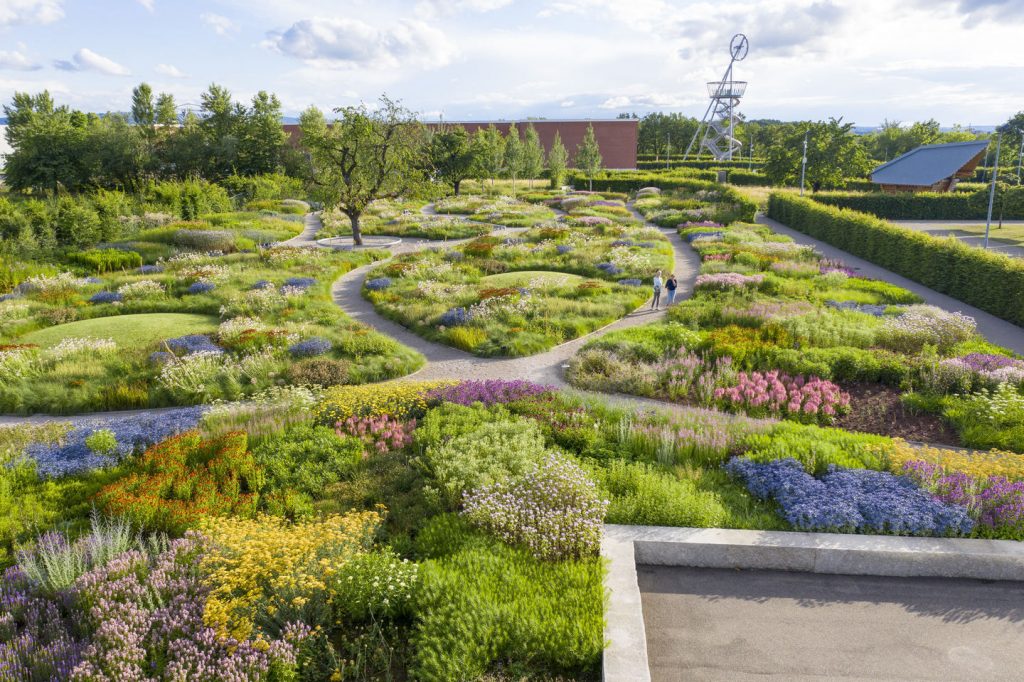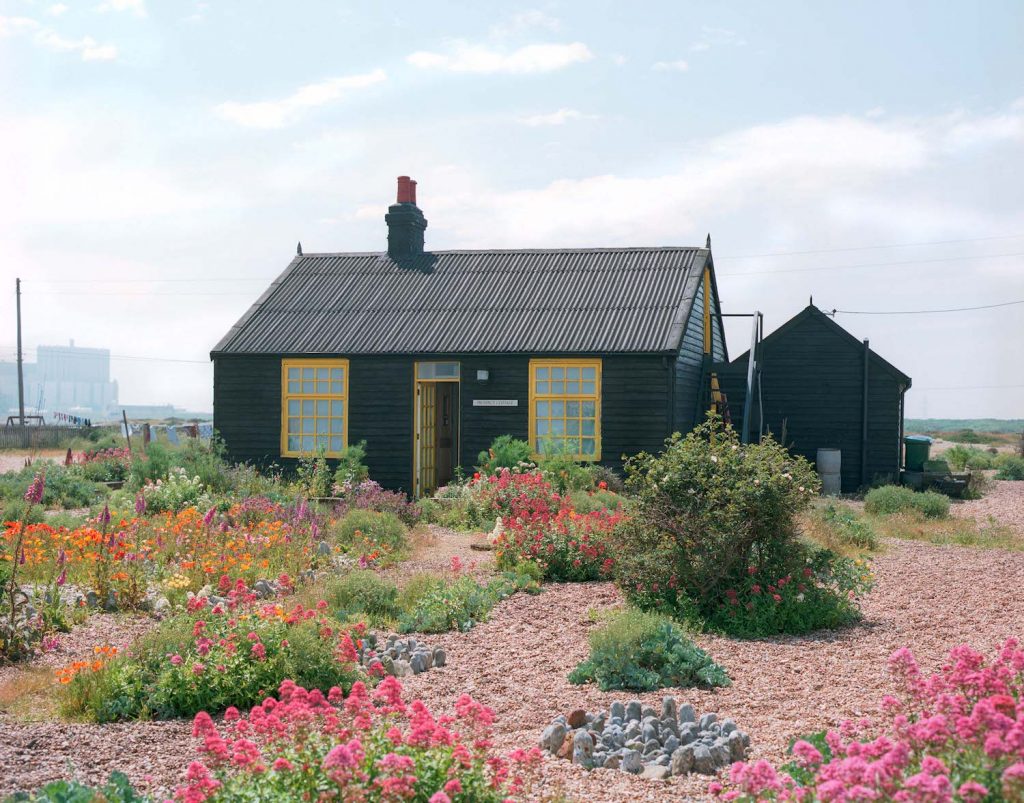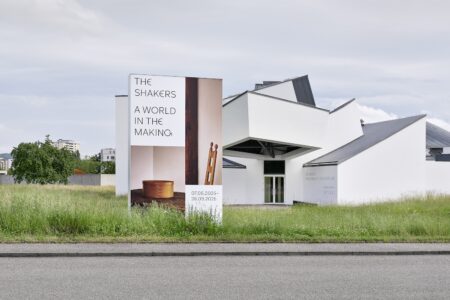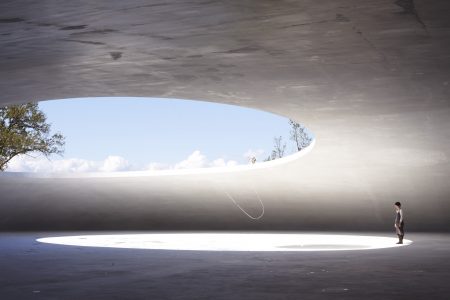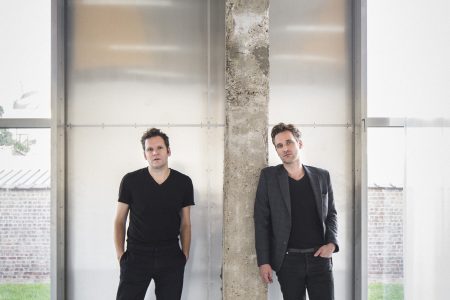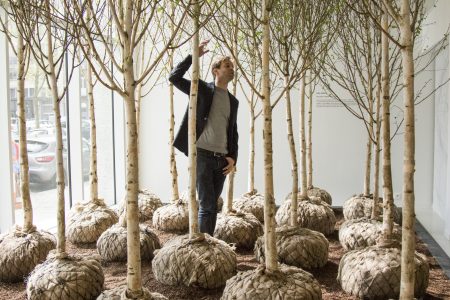Garden Futures: Designing with Nature
The exhibition Garden Futures at the Vitra Design Museum is the first to explore the history and future of modern gardens. The exhibition is on view through October 3, 2023
To arrive at the exhibition, Garden Futures, currently on view on at the Vitra Design Museum in Weil-en Rhein, one must first pass through a resplendent garden designed by Dutch landscape designer Piet Oudolf. A highlight of the impressive Vitra campus, which features many notable architectural gems including the iconic Vitrahaus by Herzog and de Meuron, Oudolf’s subtly spectacular garden, with its delicate movement and wild flora, allows for a full appreciation of the power and beauty of a garden.
Organized by the Nieuwe Instituut in Rotterdam, the Wüstenrot Foundation and the Vitra Design Museum, Garden Futures is the first exhibition of its kind to explore the cultural and political significance of gardens, particularly within the last century. Posing questions such as ‘Where do today’s garden ideals come from?’ and ‘Will gardens help us achieve a liveable future for everyone?’, the exhibition presents a selection of work from garden tools to videos, to books and contemporary objects, that speak about the impact of gardens to their surroundings – both aesthetically and socially.
The exhibition takes focus through several key themes. In one, gardens are seen as full of hope and promise, “as an idealized space that pervades our lives as well as our imaginations – a place in which immediate practical function and profound symbolic, philosophical, or even religious significance are readily compatible.” This is seen in a series of film and video projections by artists and architects such as Hans Thoma, Georg Gerster, Athanasius Kircher, Gabriel Guevrekian, Barbara Stauffacher-Solomon, Alvar Aalto, Thomas Church, Vita Sackville-West, and Luis Barragán
The second part of the exhibition turns towards the theme of “gardens bearing the marks of social and historical developments, political and commercial interests and cultural value systems.” Here we see how systems of oppression including colonial legacies have informed many traditional Western plants, including the new problem of invasive plants, as well as the proliferation in the 19th century of big industry materials such as tea and rubber. This section also looks at initiatives by gardeners and activists who created green spaces and urban farming initiatives, as with Liz Christy in New York City, whose ‘Guerrilla Garden’, started in the 1970s on the lower east side, remains an important part of the city.
The third part of the exhibition presents work by ground breaking ‘garden-makers’. This includes landscape designers such as Roberto Burle Marx and Piet Oudolf, but also experimental film maker and artist, Derek Jarman, who, as he was dying, created a poetic garden in the far reaches of Kent near the sea and a nuclear power plant. A beautiful film by Howard Sooley captures this touching process and his connection to the wild surroundings. Jamaica Kincaid uses her Vermont garden as a way to address colonial repression and cultural appropriation, while a spotlight on Malaysian landscape architect Ng Sek San, shows his grassroots initiative to carve out community gardens within the megalopolis of Kuala Lumpur.
The last section looks at contemporary projects addressing the future. “In an age of climate crisis, social injustice, biodiversity under threat, and social isolation, the garden offers a place in which to reimagine the future and develop solutions – a place of healing, spirituality, and learning.” It features a large-scale tufted tapestry by Alexandra Kehayoglou that reflects the perils of climate change on the landscape. Visitors are invited to take of their shoes and tread lightly across the terrain.
Formafantasma designed the exhibition installation using spring-like greens and yellows on the walls, wood and chunky dark green carpets to create an intimate and spring-inspired atmosphere. A comprehensive catalogue with illustrations, essays, conversations and case studies of pioneering projects has been published on the occasion.
@vitradesignmuseum
